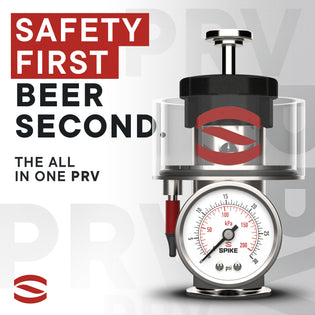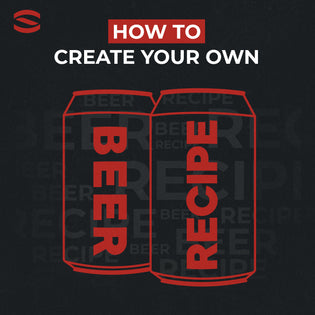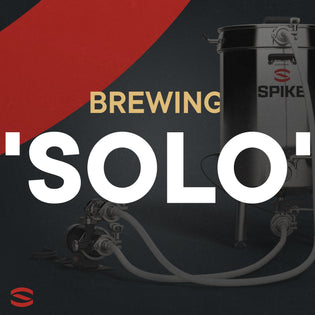
Cold crashing is a practice used by brewers traditionally to improve the clarity of beer prior to transferring out of fermentation. The process involves lowering the temperature of the beer after fermentation is completed and prior to packaging. By decreasing the temperature, brewers can essentially accelerate the time required for particles to drop out of suspension resulting in a cleaner looking and tasting beer.
We wait a week to begin the cold crash to allow the yeast that is still in suspension to clean up any off flavors that develop naturally.
Most of the time cold crashing triggers a survival reaction in yeast cells still floating around inside the tank. The cells that don't fall to the bottom in a dormant state will bond together because of the chilly, near freezing temperatures to form larger “flocs” of yeast. At this point, a little physics get added to the mix by the way of Stokes Law, which states broadly that a particles settling velocity is proportional to its radius.

Where Vs is the Velocity and R is the particles radius. The other variables, (wort density, particle density, gravity, and viscosity) all remain constant. So simply, by natural processes, we the brewers can create an environment that promotes yeast to clump together, increasing their size and in return speeding up the rate at which they fall out of suspension.
Stokes Law is also the reason brewers might add Irish moss towards the end of a boil. Irish moss is a form of seaweed that contains k-carrageenan. Normally k-carrageenan is coiled in a helix shape, but when heated up it unwinds and positive charged particles are attracted to negatively charged sulfate groups on its ends. As the wort cools, the molecule snaps back into shape and will fall out of suspension.
At RJ Rockers, our process is generally standard for every batch:
- Three days after brewing, we’ll start to pull samples, monitoring gravity. We use this little Anton-Parr digital density meter that links up with your smartphone, minimizing the amount of beer needed and increasing accuracy. It is definitely worth the investment, in our opinion.
- After terminal gravity has been established and deemed stable, and at least one week after the brew date, we’ll initiate a temperature drop from 69 F (our ale yeasts fermentation temperature) ~10 degrees a day until we reach 36 F using our TC-100 temp control kit on our Spike Conical. We wait a week to begin the cold crash to allow the yeast that is still in suspension to clean up any off flavors that develop naturally. One of those compounds the yeast will clean up is diacetyl, which comes across as a buttery flavor. Beginning the cold crash or transferring the beer too soon would not allow the yeast to aid in the removal of off flavors. We generally don't go from 69 F straight to 36 F in one motion to put the less amount of strain on our glycol chiller.
- Unless there’s a logistic crunch or a prescribed hibernation at lower temps, we’ll move the beer after a couple days at near freezing temps into a Brite tank, also at 36 F, where the beer will finish carbonating and conditioning for around a week before it’s sent to packaging.
SPUNDING, THE IDEAL GAS LAW AND CLARITY
We use a partially spunding process in primary fermentation in conjunction with cold crashing (Not familiar with spunding? Check out the article by John from New Barons which explains it HERE). When the beers around 5 P (1.020 SG) we close the blow of valve allowing residual CO2 to go into suspension, partially carbonating our beer. But as we drop the temperature inside the tank, the pressure also falls - thanks to the Ideal Gas Law. Our brewers monitor the pressure inside the tank, adding more CO2 to maintain ~12psi. But carbonation deserves it’s own post. And by the way always remember to use a pressure release valve during this step!
The Spike All-In-One PRV is an awesome device that allows us to quickly, easily and safely spund our beers.
Clarity is a matter of personal preference, it ultimately comes down to what you envisioned in your minds eye for the final product to look like. When in doubt, rdwhahb (relax, don't wory, have a home brew). While cold crashing isn’t necessary to produce a great tasting pint, it allows our brewery to speed up the time a batch spend in primary and get beer in the hands of the people.
Hank Marshall
Brewer at RJ Rockers Brewing Company
Spartanburg, SC











